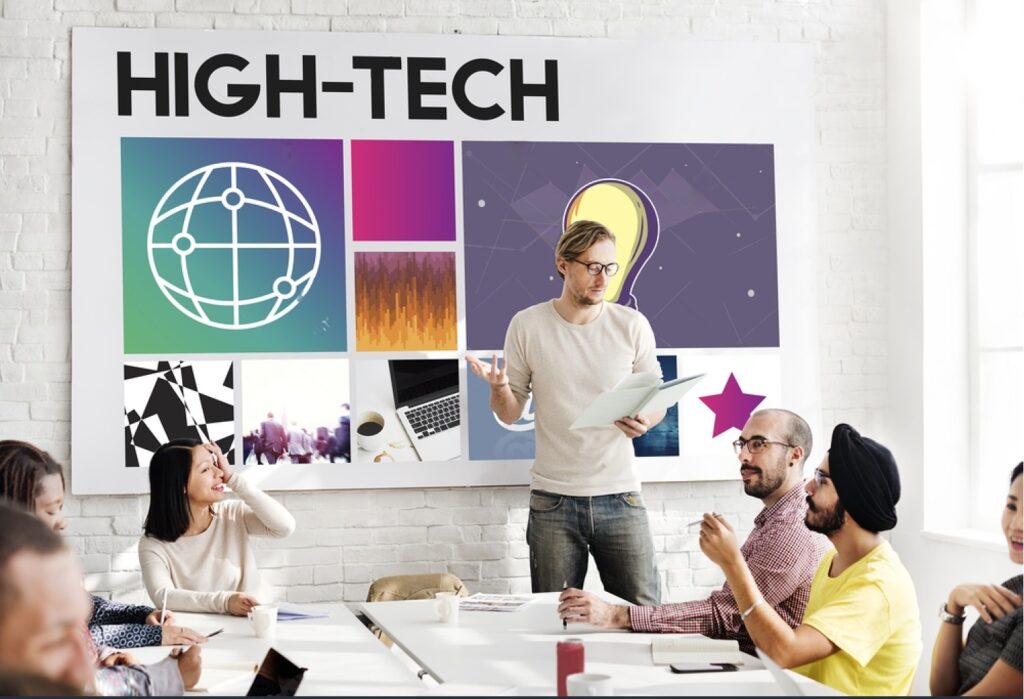
Innovative Teaching Strategies: How Tech is Transforming Learning
Innovative teaching strategies have been implemented by top companies in order to revolutionize the way we educate future generations. With technology advancing at a rapid pace, it is important to keep up with the latest trends to ensure that students receive the best possible education. Here are five innovative teaching strategies that top companies are using:
1. Virtual Reality (VR) in Education
Virtual reality technology has become increasingly popular in recent years and is now being implemented in education. This technology allows students to experience and learn through interaction with a 3D world. Google has been leading the way in introducing experiential learning in schools through VR technology. By using VR, students can engage in realistic simulations that can help them to better understand concepts that were once difficult to grasp.
2. Artificial Intelligence and Machine Learning
Artificial intelligence (AI) and machine learning have been implemented in schools to automate key activities such as grading and providing feedback on areas that need improvement. These technologies are also used to enhance personalized learning among students, especially those with special needs. Adaptive programs have been developed that cater to the individual needs of students. AI tutors have also been developed to teach subjects such as mathematics and writing, providing a more personalized learning experience.
3. Cloud Computing for Education
Cloud computing technology allows educational resources to be accessed from any part of the world. Written lessons, audio lessons, videos, and video assignments can be stored on a school’s cloud terminal, enabling students to access these resources from the comfort of their homes. This technology eliminates the hassle of carrying tons of books or practically living at your local library. It also allows students to chat live with their tutor, making it easier to receive assistance when needed.
4. 3D Printing
3D printers have been introduced in the education sector, enabling students to gain a better understanding of complex concepts. Through this printing technique, students can create 3D models that bring concepts to life. In higher educational institutions, 3D printing is used by engineers and system designers to develop prototypes to be used in the development of final systems. 3D printing takes concepts and makes them real, providing students with a hands-on learning experience.
5. Social Media in Educational Institutions
Social media has become a popular tool for educational institutions to connect with each other and exchange ideas. Through social networking sites, universities and colleges can organize contests, meetings, and parties. Students from different schools can exchange ideas which can change lives. By using social media, educational institutions can create a more collaborative and engaging learning environment.
Takeaway
Innovative teaching strategies and technology-driven solutions have brought about a significant shift in the education sector, making it more dynamic, inclusive, and effective. These advancements have opened up a world of possibilities for students and educators alike, enabling them to tap into the full potential of modern technology to enhance learning outcomes.
The future of education is incredibly exciting, with more and more companies investing in cutting-edge technologies such as artificial intelligence, virtual reality, and cloud computing. These innovations are poised to revolutionize the way we approach education, making it more personalized, interactive, and accessible.
To stay competitive in this rapidly evolving landscape, educators need to embrace these changes and integrate them into their teaching practices. This means being open to experimenting with new teaching strategies, leveraging technology to create more engaging and interactive lesson plans, and exploring innovative ways to assess student performance. By doing so, educators can help prepare the next generation for a world that is becoming increasingly digital and interconnected.
In conclusion, the possibilities for innovation in education are endless, and it is up to educators to stay at the forefront of these developments. By embracing new technologies and exploring innovative teaching strategies, we can create a more dynamic, inclusive, and effective learning environment that prepares students for success in the 21st century. The future of education is here, and it is exciting!





